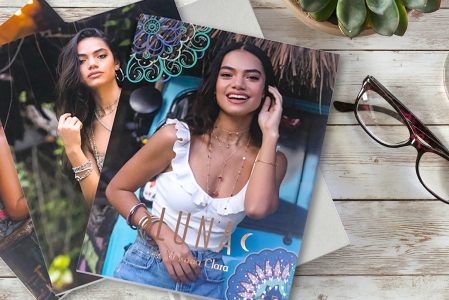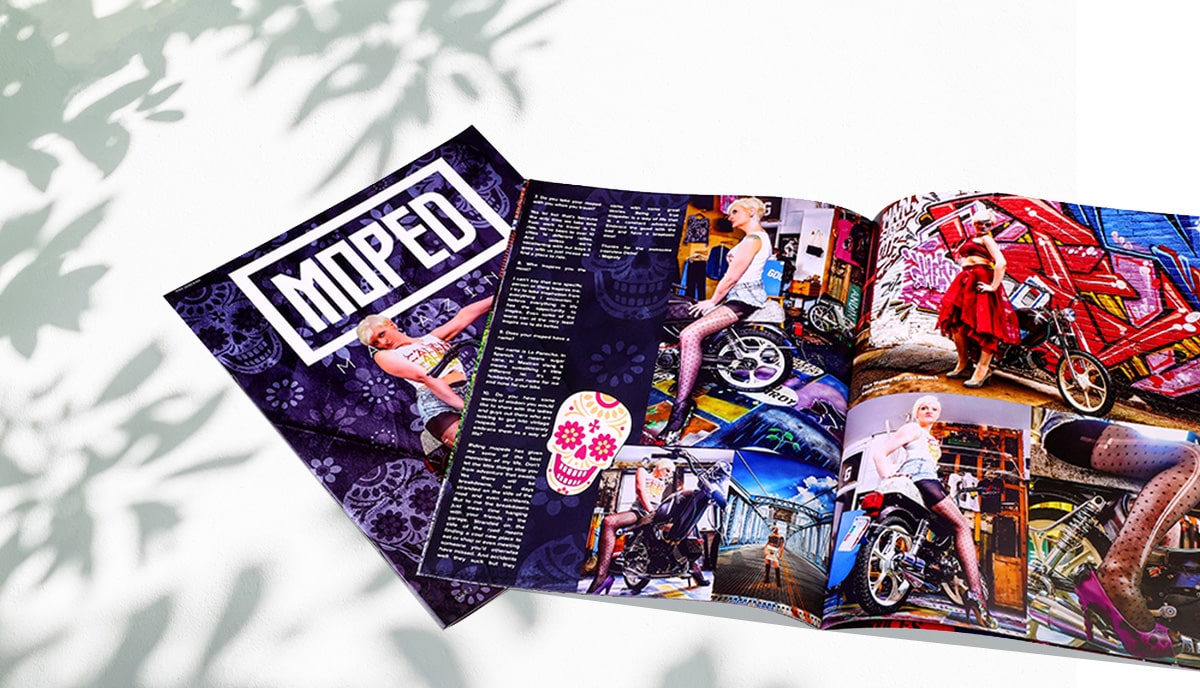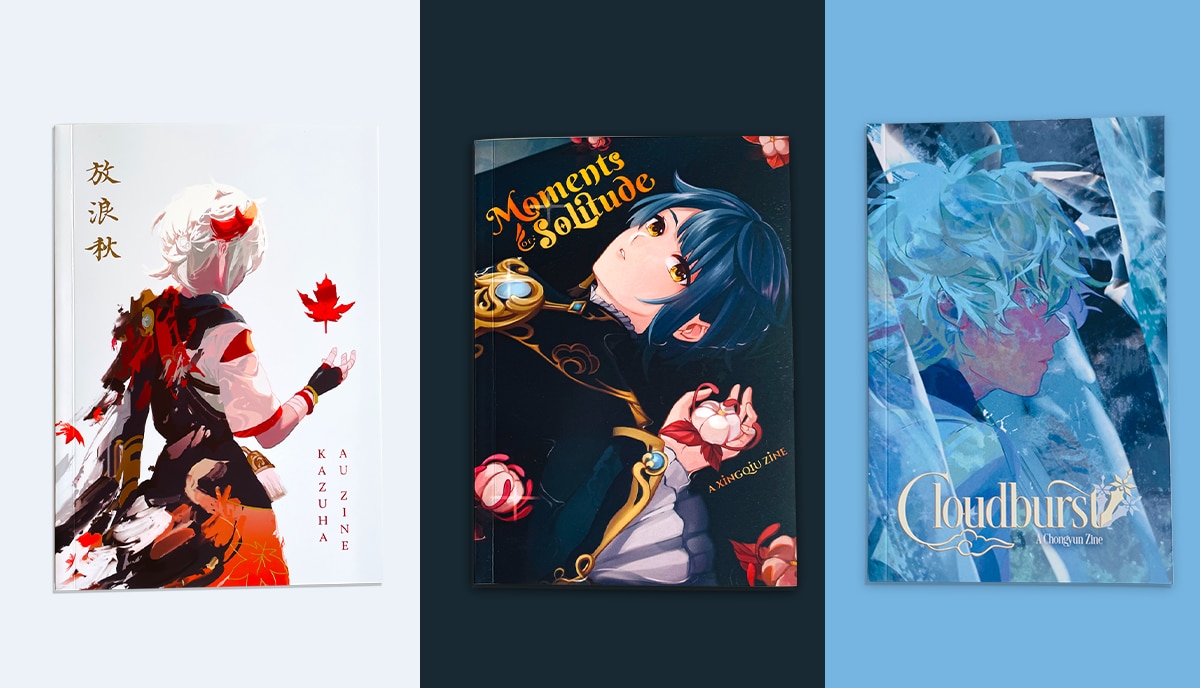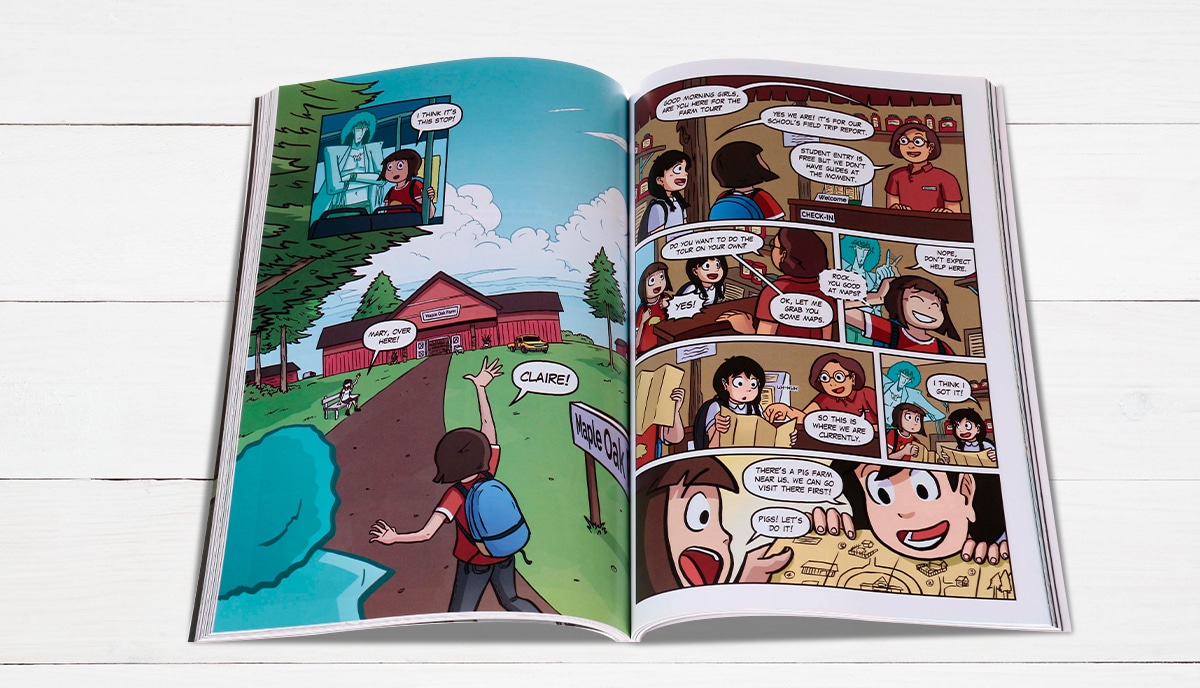We explain everything you need to know to design a high quality fashion lookbook that sells your collection
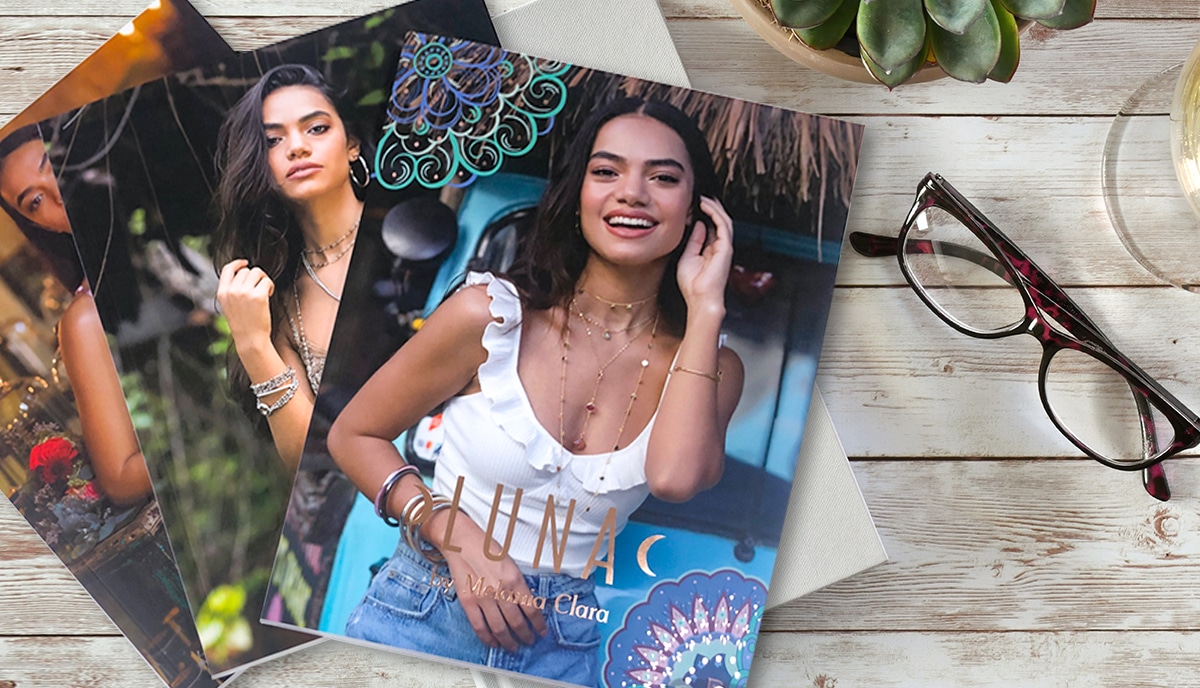
Creating a successful fashion lookbook is an essential and worthwhile project for showcasing your brand and presenting your latest collection to potential buyers and clients. A well-designed lookbook can do more than just display your products. It should also tell a story — both visually and with text — which provokes an emotional response in your target audience. It's that element of emotional engagement that “hooks” people browsing your lookbook and gets them in the “buying mood”.
In this post, drawing on almost 30 years of success in the offset printing industry, during which we've worked with more fashion clients than you could squeeze onto the catwalk, we'll make a thorough analysis into every aspect of how to design a fashion lookbook that sells. Let's define what we mean by a fashion lookbook in the first place.
What is a fashion lookbook?
A fashion lookbook is more than just a bunch of photos. The fashion lookbook's job is to be a carefully curated collection of photographs that showcase your latest clothing and accessories collection, whether it's conceptual, seasonal, or focused on a specific look and style. In short, it's about more than pretty pictures of clothes. It's a visual representation of the style and values that you, as a designer, bring to your brand. So, besides showcasing superb photographs, it must also “tell a story” and engage viewers at an emotional level, appealing to their sense of self, their ambitions, and their hopes and desires, which they can express through buying, owning, and wearing your fashions.
The purpose of a fashion lookbook, then, is primarily to inspire and engage the audience, providing them with ideas on how to style your products and persuading the viewer of the emotional, physical, psychological, and social benefits they can accrue by incorporating your fashions into their lifestyles. It serves as a tool for potential customers to visualize themselves wearing your brand's clothing or accessories and helps them make informed purchasing decisions.
So, fashion lookbooks serve multiple purposes for both brands, designers, and consumers. For brands and designers, lookbooks are a marketing tool that helps you communicate your brand identity, showcase your products, and attract potential customers. They help create a visual narrative that expresses your brand's vision and values. Lookbooks also provide you with an opportunity to collaborate with industry professionals, such as photographers, stylists, and models, which can lead to further creative associations and inspire new work. An effective lookbook is always the result of close collaboration. We'll look at the importance of building your team — and how to do it — in a moment.
For consumers, lookbooks serve as a source of inspiration and guidance. They provide ideas on how to style outfits, pair original pieces together, and stay up-to-date with the latest fashion trends. Lookbooks also help consumers visualize how your products will fit into their own personal style and wardrobe. They take the viewer on a very personal, emotional journey which pulls them into “your story” as a designer, leading to positive, aspirational associations which lead to sales.
How to plan a fashion lookbook
While in most of the rest of this post, we'll examine how to design a fashion lookbook, it's essential to come to the design process with a clear definition of your core artistic concept and marketing goals for your lookbook already established. So, before you get into design and printing, give serious thought to planning. Consider the following questions to get you started:
- What is the purpose of your lookbook? Is it to introduce a new collection, highlight specific products, or promote a particular theme?
- What message do you want to convey to your audience?
- What emotions or feelings do you want to evoke?
- What are your overall goals? Is it to increase brand awareness, drive sales, or attract new customers?
By developing as clear a concept as possible and defining your goals with precision, you'll find it easier to create a cohesive lookbook that has maximum impact on the eye and resonates with your potential customers. Before finalizing any aspect of your plan, you'll need to take stock of your budget, too, and calibrate your vision according to what's practical according to the economic constraints within which you must work. This is true whether you're a boutique designer or working for one of the big fashion houses.
Total up every expense that might be involved. Be rigorous and count every dime and cent. When budgeting, it is a common mistake to overlook smaller expenses. But those “negligible” costs can surprise you by adding up. End-to-end, when you're budgeting for how to design a fashion lookbook, cover the following expenses:
- photographer fees
- model fees
- location rentals
- props
- styling, hair and makeup
- post-production editing
- layout and design
- printing
- shipping
- and distribution.
You'll probably want to add market research, travel expenses, catering, administration fees, insurance and legal costs, social media campaigning, and more. Knowing what you've got to play with and figuring out where best to allocate limited resources is all part of the economics of success. A well-planned budget will help you make informed decisions and prioritize your expenses to guarantee a smooth execution of the shoot and help you stay within your financial limits.
Get inspired and research trends
As we've said, growing a deep understanding of your target customer is the vital “background” to everything else that you do when designing a lookbook. And it's not much good just imagining who you'd like to buy your stuff. You need to find out. You need data, and facts. Conduct thorough research online, on the socials, even on the high street. It may be best to engage the services of a professional third-party market research company to speed up the process, cast the net as wide as possible, and achieve more accurate and reliable results. The purpose of all this is to gather specific information and to gain insights into your potential customers' preferences, interests, economic and educational status, and purchasing behavior. Consider factors such as age, gender, lifestyle, and fashion preferences.
By understanding your target audience, you can tailor your lookbook's content, design, and messaging to appeal to their specific tastes and needs. Even without buying in a market research agency, you can do a lot yourself and, if you are working solo or in a small team, then you may have more time than money to invest. You can gather information and inspiration free, or for very little cost, from various sources, including fashion magazines, websites, social media channels, online forums and groups, high street stores, and catalogs.
A great way to bring together your market research results and your artistic ideas is to create a mood board to visualize the overall aesthetic, color palette, and style you want to achieve in your lookbook. A mood board serves as a visual reference and helps you maintain consistency throughout the design process and if it's based on your “ideal customer profile” it helps you stay “on message”. It also aids in communicating your vision to photographers, models, and other team members involved in the project.
At this stage, you may have more ideas and potential themes than you can use. But that's great! Now, you need to decide on the look and style you want to portray in your lookbook, selecting from all the material you've generated. Are you aiming for a casual, streetwear vibe or a high-fashion editorial feel? Figure out the overall aesthetic parameters, including the hair, makeup, and styling choices, not to mention accessories, that will enhance the clothing. This will also help you select the right models and create a cohesive “narrative” throughout the lookbook.
How to choose the right photographer for a fashion lookbook
One of the most important decisions you'll make for your lookbook is choosing the right photographer. Not all professional photographers are fashion photographers. However skilled in their field, if your photographer has only specialized in landscapes, portraits, photojournalism, or wedding photography, for example, it's unlikely they'll have the right skills and experience to do justice to your lookbook. So, always be sure to select a reputable photographer with experience in fashion photography.
There's no shortage of fashion photographers out there. The difficulty is finding a good match for your project and your budget. Here are a few key factors that it's vital to consider when sifting through photographers:
- Look for photographers who have a portfolio that is a good fit with the style and aesthetic for which you're aiming
- Check their website and portfolio and follow up on their past work
- Look for signals about their reputation, including client testimonials, press coverage, and any professional associations to which they belong
A skilled fashion photographer is essential for capturing high-quality images that showcase your garments in the best possible light while also creating imagery that's uniquely eye-catching. Discuss your artistic vision and expectations with the photographer to make sure that they understand your brand and understand what you're hoping to achieve with this presentation of your collection. Equally, while they may have the technical and artistic skills, it's important to interview potential photographers face-to-face. Finding someone who you like, who will build a positive, respectful, and amiable rapport with the rest of the crew and the models, is no less important than their photographic skills.
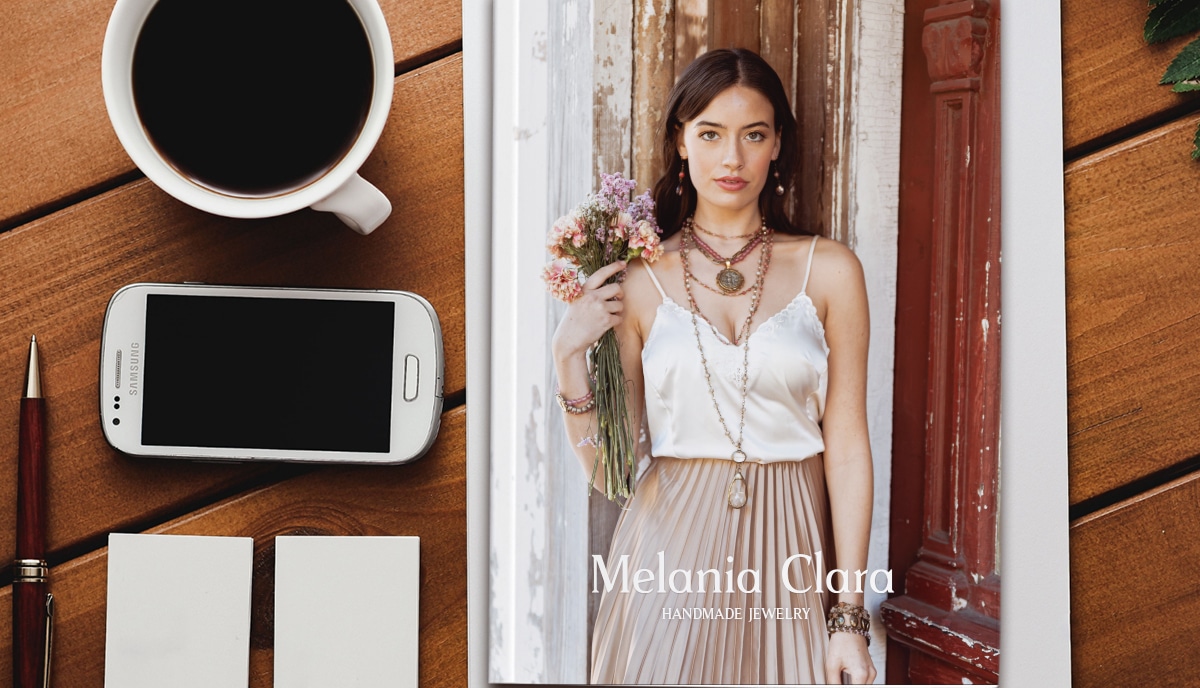
How to select models for your fashion lookbook
One of the most challenging aspects of preparing for a fashion lookbook shoot is choosing the right models. Talk to the agencies you've used. Often, you can save a lot of time and heartache by discussing your needs with the agencies. The most reputable fashion model agencies have lots of experience and will have first-hand knowledge of the models that may be a best fit for your project.
Once the agency gives you a “long list,” your first step is to narrow it down to a short list. In this step, you'll probably start just by examining the models' photographs and past portfolios. You'll need to assess several factors such as
- Age
- Body type
- Height
- Facial features
- Expressivity
- Experience
Good fashion models are more than bodies to hang clothes on. They bring their personality, their emotional as well as physical expressivity, and communication skills to the role. That's why, once you have your short list, you'll need to conduct casting auditions and interviews before you make your final selection.
When planning your casting and interview procedures, make sure that you remember the models are people, not mannikins! So, make sure that they have care and support throughout the process; whether that means simply sending pre-audition information, location details, and any other requirements well in advance with plenty of time for them to get back to you with questions; or sending a car; or providing a safe, comfortable, private space for them to wait and change; or making sure that refreshments and a bathroom are available; or just being punctual and friendly.
Styling and preparing the photoshoot
Any successful photo shoot is based in part on the correct choice of photographer, models, and locations, but thorough preparation is the actual key. The more you can prepare and organize in advance, the easier and more effective the shoot will be on the day. A clear timetable which considers everyone that's needed, when and how they'll get there, what resources you'll need to make available, and so on; all needs planning. Everything from hair and makeup, fitting and adjusting the garments, and handling lighting, scenery, and assistants down to knowing who's responsible for making the coffee needs to be thought about and organized.
• Planning the hair and makeup
Collaborating with professional hair and makeup artists is essential to achieve the desired look for your models. Discuss your vision with them and provide reference material from your mood board. It's important to schedule a hair and makeup trial before the shoot to make sure everyone agrees and to make any necessary adjustments.
• Fitting and adjusting clothes
To showcase your garments in the best possible way, it's crucial to make sure you get exactly the right fit on the models. This may — in fact, it almost certainly will — involve alterations or adjustments to the clothing before and during the shoot. Working closely with a stylist or seamstress can help make sure that the clothes fit perfectly and look flattering on the models.
• Hiring additional assistants
Depending on the complexity of your shoot and the number of garments and accessories involved, hiring additional assistants can be helpful. Assistants can handle tasks such as steaming clothing, organizing looks, setting up equipment, wardrobe and time management, and looking after all the little details that guarantee everything runs smoothly on set. While you can find assistants through agencies, you might also consider reaching out to local fashion schools or colleges to find assistants who are looking to gain experience in the industry.
• The right location for a fashion shoot
For certain brands and styles, location is everything. Consider whether you want an indoor or outdoor setting, a rugged natural space or a slick urban environment, and make sure that you consider practical considerations such as lighting, accessibility, and permits. Scouting potential locations beforehand will help you plan the logistics and ensure a smooth photoshoot experience for everyone involved.
If your brand targets urban youth, an industrial context or city streets might be appropriate. For a bohemian-inspired collection, a natural outdoor setting with lush greenery could be ideal. Whether it's a studio, a unique architectural space, or an outdoor landscape, the location should reflect and enhance the overall narrative of your lookbook and contribute to the atmosphere and uniqueness of your vision and furnishing a visually appealing backdrop for your products.
• Styling the outfits
Styling the outfits is obviously essential in creating a cohesive and visually appealing fashion lookbook that will also help to sell your collection. So, when you're working out how to design a fashion lookbook that sells, you'll need to decide whether to collaborate with a stylist or take on the role yourself to curate the outfits that best represent your collection. Either way, pay close attention to details such as accessorizing, layering, and mix-and-match options to showcase the versatility of your designs.
In a lookbook, the focus is on the clothes and how they will appear on the person wearing them. To showcase the garments effectively, pay attention to the details and quality of the clothing. Full-body shots are essential to allow potential customers to visualize themselves wearing the clothes. Equally, planning for close-up shots using tight focal lengths like 50 mm, 85 mm, or even 100 mm can emphasize the intricate details and craftsmanship of the garments. These close-up shots help customers appreciate the quality and unique features of the products. Remember to include a variety of tight, medium, and wide shots to provide a comprehensive visual story of the collection.
• Simplify the set
To maintain the focus on your garments and guarantee a clean and impactful lookbook, it's important to simplify the set and minimize distractions. Avoid overcrowding the scene with props or excessive elements that may take away from the principal subject. A clean and minimalistic set allows the garments to take center stage and allows your audience to fully appreciate the details and craftsmanship of your designs.
To get a cohesive and organized lookbook, create a shot list and mood board that align with the brand's vision. The short list will outline the specific images you want to capture, including various angles, poses, and compositions. This will help you stay on track during the photoshoot and ensure that you cover all the shots.
• Transport, catering and care
How will people get to the location or locations, whether that's a site visit or a studio? If people need transport, make sure you arrange flights, trains, and cars in advance and double check everyone has the information they need to arrive on time. People also need refreshments, so you'll need to engage caterers or at the very least get food and drinks delivered to your location. Check in with everyone involved to see if they have special dietary requirements such as vegan or vegetarian food, gluten-free options, or anything else. It's also a good idea to have personal care and support on the shoot. That could include a counselor, a consent and intimacy coordinator, a health and safety officer, and a lawyer.
Collaborate with your photographer
Managing a fashion lookbook photoshoot can be a bit like directing a movie. You are the director, the photographer is your camera person, and the models are your actors. The best movie directors collaborate with their cast and crew to achieve their artistic vision. The worst steamroller over everyone else's needs and ideas. Remember that while you know what you want, other members of your team may be better qualified to know how to get it. So, collaborating creatively in a dialogue with your photographer can be the most fruitful approach both before and during the shoot.
Lighting and composition are the two fundamental elements you'll need to consider when creating the right images, atmosphere, and impact for your lookbook. Together with your photographer, experiment with different lighting setups, both natural and artificial, to achieve the mood and ambiance you're aiming to produce. Discuss your needs with your photographer and let them share their knowledge and experience with you. They should have a good idea about how different several factors—such as the rule of thirds, leading lines, and other compositional techniques—along with angles, perspectives, framing, and lighting conditions can affect the appearance and colors of the clothes in your collection.
Post-processing photographs for a fashion lookbook
Post-processing is the next most important step in fashion photography. You take the “raw material” which the camera provides and work with it digitally. This kind of editing is an expert field and requires experience and familiarity with the software used. It's essential to approach editing with a discerning eye and select the best shots for enhancement. The best option would be to hire a professional editor to work on this aspect for you, although these days you'll often find that your photographer also owns this skillset. If you want to try your hand at this yourself, you'll need the best software. We work with the Adobe Suite and it's what we recommend to all our clients. So, here are some tips to help you make the most of your post-processing workflow:
• Adobe Lightroom
Begin your post-processing journey by using Adobe Lightroom to review your images and make your selections. A thorough selection process is vital to make sure that you choose only the strongest shots for further editing. Aim for quality rather than quantity. Once you've made your selections, use Lightroom's tools, such as the Tone Curve, to make basic adjustments to exposure, contrast, and color balance. You can experiment your way through this—the tools are fairly intuitive—or study the many books, videos, and other support material, as well as reaching out on subreddits and other online groups for help.
• Refining and retouching in Adobe Photoshop
Once you've completed this first stage, you can migrate your images to Adobe Photoshop for more advanced editing and retouching tasks. Photoshop offers a wide range of tools and features to refine your images and achieve your desired look. Use techniques such as frequency separation to smooth skin tones while retaining texture, or use the Sponge tool to selectively enhance the color of specific elements in your photographs. Remember to balance enhancing your images and maintaining their authenticity. Over-touched work can be a deal breaker, as your images no longer seem credible; unworked photography can make it hard to establish a consistent artistic style.
This can be a long process—especially if you're doing it yourself—but don't rush it. And always keep backup copies of your original images! Once you've finished here, you'll have a beautiful, professional-looking collection of photographs and you'll have developed a good idea of the “narrative” order and layout associations you'd like to see in your final lookbook. It's time to work on the layout and design of the pages that will make up the book itself.
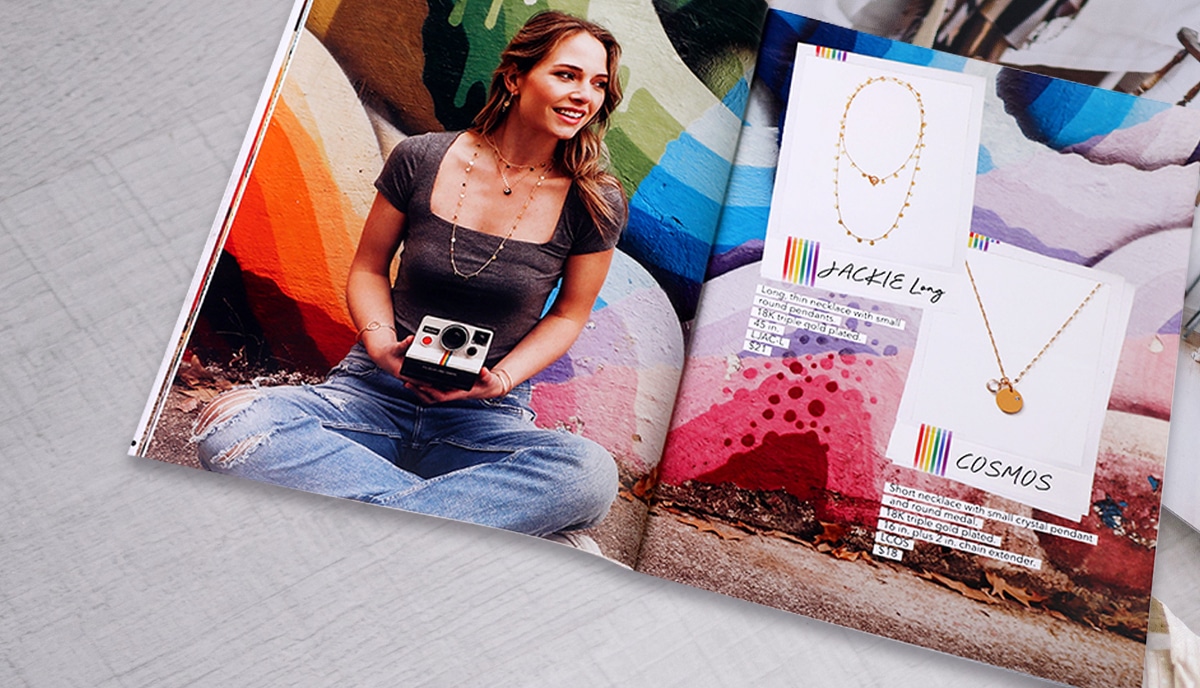
Layout ideas for fashion lookbooks
Before we dive into the more technical aspects of layout that you'll need to consider when thinking about how to design a fashion lookbook, it's a good idea to start with a logical concept of the overall style within which you want to work. Rather than seeing this as a constraint, see it as providing a framework to guide the design decisions you make and help keep you on message with the mood you want to convey and the story you want to tell. Here are a few great starting ideas for you to explore:
- Minimalistic and clean: A minimalistic layout allows the focus to be on the products themselves. By using ample white space, clean typography, and simple grid structures, you can create a sleek and modern lookbook that enhances the visual impact of the collection.
- Collage style: A collage-style layout can add a sense of dynamism and creativity to your lookbook. By combining different images, textures, and graphics, you can create a visually striking composition that captures attention and curiosity.
- Storytelling layout: A storytelling layout involves presenting the products in a narrative format, allowing the audience to connect with your brand's story and vision. You can achieve this by using sequential imagery, incorporating text, and creating a sense of progression throughout the lookbook.
- Grid-based layout: A grid-based layout offers a structured approach to showcasing your collection. By dividing the pages into a grid, you can create a harmonious lookbook that allows for easy navigation and comparison between different products.
- Full-page spreads: Using full-page spreads can create a dramatic impact and emphasize the key pieces in your collection. By dedicating an entire page to a single image or outfit, you can create a bold and attention-grabbing lookbook.
- Mixing text and imagery: Incorporating text in your lookbook can provide valuable information about the products, brand, and styling tips. By combining text and imagery in a visually appealing way, you can create a comprehensive and informative lookbook that engages the reader.
- Color story layout: A color story layout means organizing the lookbook based on specific color themes or palettes. By grouping products with similar colors together, you can create a visually cohesive and harmonious lookbook that conveys a specific mood or style.
- Modular layout: A modular layout involves using modular components or panels to create a visually dynamic and versatile lookbook. By arranging the modules in different configurations, you can create endless possibilities for showcasing your work.
- Typography-focused layout: Typography can play a significant role in creating a visually memorable lookbook. By experimenting with different fonts, sizes, and layouts, you can use typography as a design element to enhance the overall aesthetic and storytelling of your lookbook.
- Interactive elements: Adding interactive elements to your lookbook can enhance the user experience and make it more engaging. This can include features like QR and AR codes the reader can scan, leading to video content, or 360-degree views, allowing the audience to explore the products in a more interactive and immersive way.
These are all great options, but the list isn't exhaustive. Also, it's not necessarily a case to choose just one or the other. Mix-and-match isn't just a key to good clothes styling—it's a great way to approach design and layout, too! Before we move on to the nitty-gritty aspects of preparing your layout files for printing, we'd like to take a slightly closer look at the last of these suggestions: interactive elements.
Interactive elements for lookbooks
Traditionally, lookbooks have been static, offering limited information on the featured designs—often not much more than a fancy catalog with less information! However, with the rise of technology and the desire for more interactive experiences, incorporating QR codes and AR codes into lookbooks has become a game-changer for designers, brands, and consumers alike. By linking QR codes to videos, behind-the-scenes footage, webpages, and social media, and AR codes to specific, 3D interactives, you can provide a dynamic and immersive experience that can really sell your work.
The goal is to engage potential consumers and make them feel connected to your brand and its products. This shift towards interactivity has led to incorporation various multimedia elements in lookbooks, such as videos, animations, and interactive, 3D features. QR codes and AR codes provide a seamless way to bridge the gap between the physical and digital realms, allowing users to access additional content with a simple scan. These simple technologies allow your physical printed lookbook to become a portal to a multi-dimensional experience that goes beyond the limitations of print. They can serve as gateways to a treasure trove of additional content, including behind-the-scenes videos, interviews with designers, styling tips, and more.
Best practices for adding codes into lookbooks
To guarantee the effectiveness of QR and AR codes in lookbooks, it is important to follow some best practices:
- Placement: codes should be strategically placed throughout the lookbook, ensuring they are easily visible and accessible. Ideal locations include the corner of each page or near the featured designs.
- Design integration: codes should be seamlessly integrated into the overall design aesthetic of the lookbook. Customizable frames and logos can match the brand's visual identity and create a cohesive look.
- Clear instructions: Explicit instructions should accompany the codes, explaining how to scan them and what users can expect to find. This helps eliminate any confusion and encourages users to engage with the codes.
- Testing and optimization: Before printing the lookbooks, it is essential to test the codes on different devices and scanning apps to ensure they work seamlessly.
As technology continues to develop, the potential for QR and AR codes in lookbooks is enormous. Fashion brands that embrace this technology will undoubtedly stand out and leave a lasting impression on their public. So, the next time you flip through a lookbook, keep an eye out for QR and AR codes and make a note of how they're integrated into the print book and where they lead online.
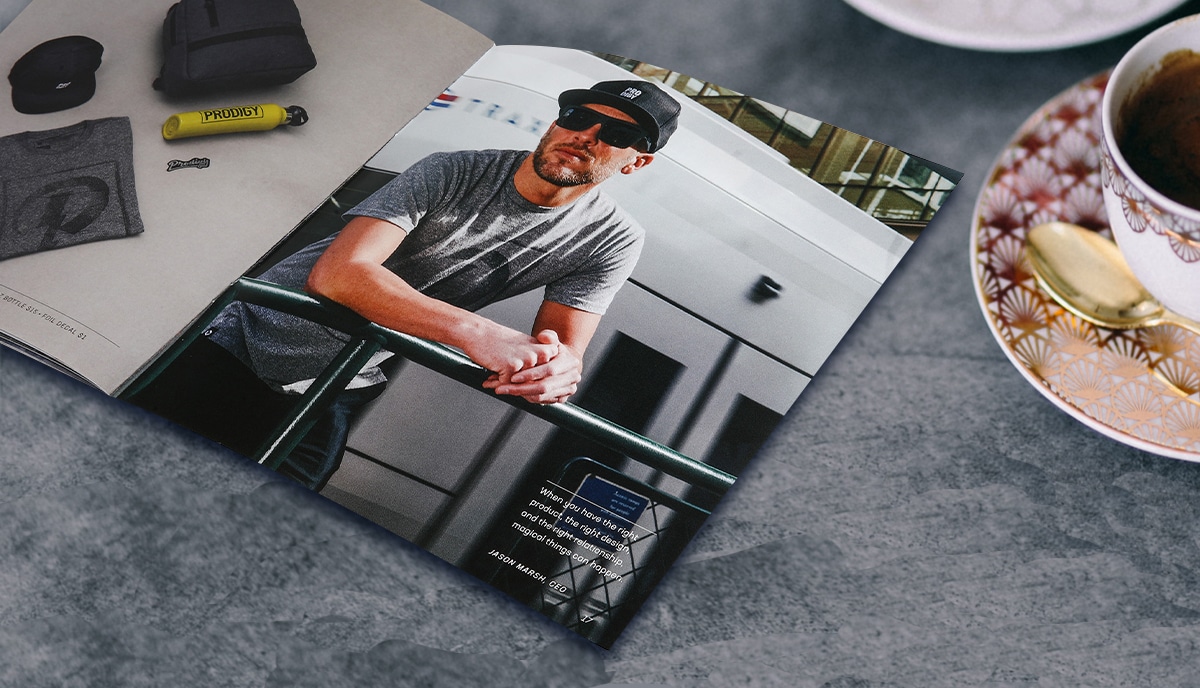
Proofreading your fashion lookbook
Once you've completed your design and layout, it's important to review and proofread your lookbook thoroughly to make sure there are no errors or inconsistencies. We'll walk you through the process of reviewing for errors, ensuring consistency in design elements, checking image quality and resolution, and seeking feedback for revisions. By following these steps, you can create a polished and professional lookbook that effectively represents your brand.
Proofreading for errors
Proofreading is a critical step in the lookbook creation process as it allows you to identify and correct errors in grammar, spelling, punctuation, and formatting. Proofreading ensures that your lookbook is free from embarrassing mistakes and maintains a high level of professionalism.
The best option is always to employ a professional, experienced proofreader. But if your budget doesn't allow that, or you feel confident about your abilities, you can always proofread the book yourself. To effectively proofread your lookbook, consider the following tips:
- Take a break: Step away from your lookbook for a while before proofreading. This will help you approach the document with fresh eyes.
- Read aloud: Read your lookbook's text aloud to catch any awkward phrasing or grammatical errors that may not be apparent when reading silently.
- Use grammar and spell check tools: If your understanding of grammar and syntax is a bit rusty, use grammar and spell check tools like ProWritingAid or the built-in spell check in your editing software to catch any obvious errors. Just remember that these apps aren't foolproof and can sometimes make mistakes, so always rely on your human judgment.
- A second pair of eyes: Ask a colleague or friend to review your lookbook for any errors you may have missed.
Check for design consistency
Consistency in design elements is crucial for creating a cohesive and professional lookbook. When design elements are consistent—such as specifications for typography, color palettes, image styles, and so on—it enhances the overall visual experience for your clients and reinforces your brand identity. When creating a lookbook, it's essential to adapt your design elements for various platforms. Consider the different display sizes and formats, such as print, web, and mobile, and ensure that your design elements translate seamlessly across these platforms.
Check image quality and resolution
High-quality images are vital for creating a lookbook. When selecting images for your lookbook, make sure that they have a high resolution. Low-resolution images can appear pixelated, blurry, and unprofessional. Aim for a resolution of at least 300 DPI (dots per inch) to make sure that your printed images are crisp and clear on the page.
Creating a consistent and error-free lookbook requires attention to detail and a systematic approach. By thoroughly proofreading for errors, ensuring consistency in design elements, checking image quality and resolution, you can create a polished and professional lookbook that effectively represents your brand.
Fashion lookbook materials
Next, we'll explore the best paper choices, binding styles, and special finishes that will bring your fashion lookbook to life. To get more technical details on these aspects, along with a quote for printing, read our key page, lookbook Printing.
Choosing the perfect paper for your fashion lookbook
With printing a fashion lookbook, choosing the right paper is an important decision. The paper you select will not only affect the overall look and feel of your lookbook but also affect how your images and designs are presented, the quality of photographic reproduction, the thickness and weight of the finished book, and the number of pages. Here are some key factors to consider when choosing the perfect paper for your fashion lookbook:
• Coated paper for vibrant images
Coated paper is a popular choice for fashion lookbooks as it enhances the vibrancy and detail of images. This paper is treated with a coating that creates a smooth finish, allowing colors to pop and images to shine. Coated paper is available in different weights and finishes, such as gloss or matte. If you're looking for a high-end and polished look, opt for a coated paper with a glossy finish. If you prefer a more subtle look, a matte finish would be a superb choice.
• Uncoated paper for text
While we strongly recommend coated paper for your photography, if you have sections of pure text—such as an introduction or editorial—you may wish to choose uncoated paper, too. Uncoated paper has a more subdued, natural look and feel but takes print well if the page is only or primarily text.
• Paper weight and durability
The weight of the paper is an essential consideration for your fashion lookbook. Heavier-weight paper is more durable and substantial, giving your lookbook a premium and luxurious feel. However, keep in mind that heavier paper may affect the overall weight of your lookbook, potentially increasing shipping costs. Consider the balance between durability and practicality when selecting the paper weight for your fashion Lookbook.
• Sustainable paper options
Sustainability is becoming increasingly important in the fashion industry. At QinPrinting, we strive to make our business as sustainable and low-impact environmentally as possible. If you're conscious of your environmental impact, consider using eco-friendly paper options for your lookbook. We offer a vast range of papers that are certified by the Forest Stewardship Council (FSC) or made from recycled materials. We also use non-toxic soy based vegetable inks. This way, you can create a stunning fashion lookbook while reducing your carbon footprint and protecting the environment.
Binding styles for fashion Lookbooks
The other side of choosing the perfect paper for your fashion lookbook is to explore different binding styles that will give your lookbook a professional and polished finish. Here are some popular binding options for fashion lookbooks:
• Perfect binding
Perfect binding is a widely used binding style for fashion lookbooks. It involves gluing the pages together at the spine with a strong but flexible glue, and then trimming the cover sheet and the interior pages to the same size, creating a clean and seamless “perfect” appearance. Perfect binding is a cost-effective option and works well with most lookbooks.
• Sewn perfect binding
For a more durable and high-end look, consider sewn perfect binding for your fashion Lookbook. Sewn perfect binding involves sewing the pages together in signatures before gluing them to the spine. This binding style provides extra strength and durability, so that your lookbook withstands frequent handling. Lookbook lay flat when opened, making it easier for viewers to browse through the pages.
• Hardcover Binding
If you're looking to create a high-end and luxurious fashion lookbook, consider hardcover binding. Hardcover binding involves attaching a hard case cover to the book block, providing extra protection and durability. This binding style exudes elegance and sophistication, making it perfect for showcasing premium fashion collections or designer collaborations. Hardcover binding also offers additional design options, such as foil stamping and embossing, to create a truly unique lookbook.
Special finishes for your fashion lookbook
To make your fashion lookbook stand out from the crowd, consider incorporating special finishes that will add an extra touch of luxury and visual interest. Here are several popular special finishes to consider:
• Spot UV
Spot UV coating in which we apply a glossy, raised coating to specific areas of your lookbook. This finish is perfect for highlighting important details, such as logos, patterns, or specific design elements. Spot UV coating adds depth and texture to your lookbook, creating a visually striking effect.
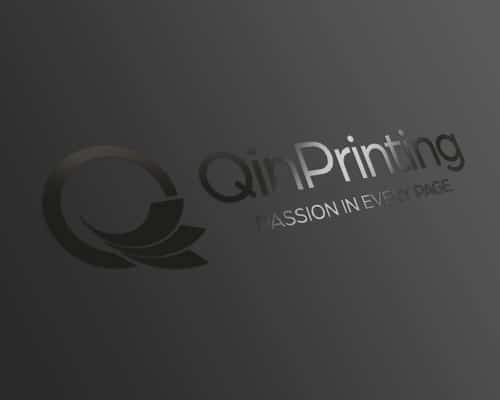
• Foil Stamping
Foil stamping is when we apply a thin layer of metallic or colored foil to your lookbook. This finish adds a touch of elegance and sophistication, making your fashion lookbook feel luxurious and high-end. Foil stamping can highlight titles, logos, or other design elements, creating a powerful and classy contrast against the paper.
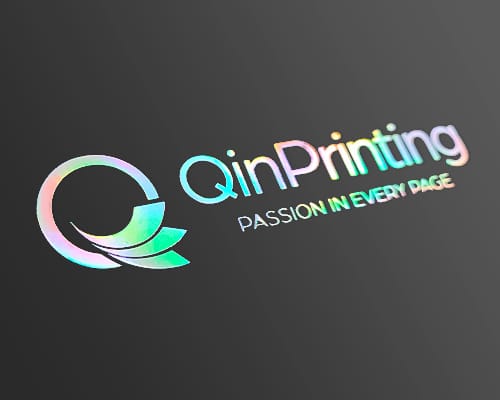
• Embossing and debossing
Embossing and debossing are techniques that create raised or recessed impressions on the surface of your lookbook. Embossing raises certain design elements, while debossing creates a depressed or indented effect. Both finishes add texture and dimension to your lookbook, making it visually captivating and tactile. Embossing and debossing work well with both UV spot coating and foil stamping.
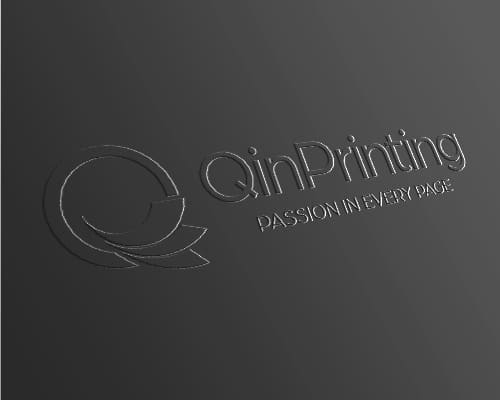
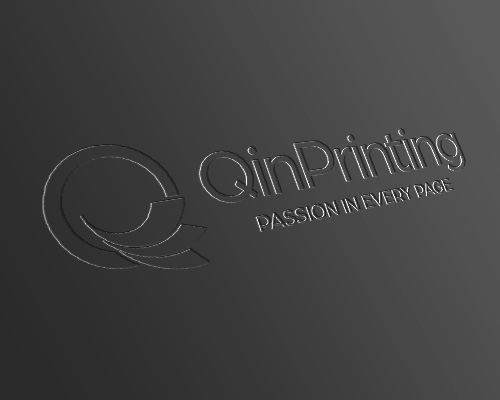
• Die-Cutting
If you're looking to push the boundaries of design, consider incorporating die-cutting into your fashion lookbook. Die-cutting allows you to create custom shapes or cutouts in your lookbook, adding a creative and playful element. You can use die-cutting to create unique cover designs, reveal hidden images, or showcase specific fashion details. This unusual but effective finish will surely make your fashion lookbook stand out and leave a lasting impression.
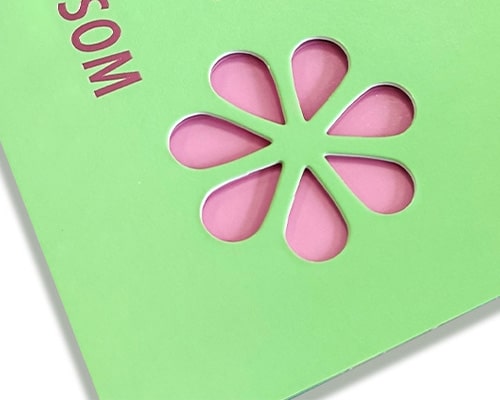
Offset printing for your fashion lookbook
The last piece in the puzzle of how to design a fashion lookbook that sells is your choice of printing technology. Offset printing is a printing method that produces high-quality and consistent results tailored to faithful art reproduction, color quality, and optimal bindings. It's what we do here at QinPrinting. While you might consider digital printing—and that's a good choice for some projects—for a high-quality lookbook, you really need the superior quality reproduction, color faithfulness, and wider range of paper and binding choices that an offset printer can offer to do justice to your collection.
Talk to us!
If you're ready to design a fashion lookbook that sells, let's have an informal, no obligation chat about how we can help you realize your ambitions. Our combination of state-of-the-art design and print technology, world class expertise, and unrivaled customer service sustains a global reputation that we've built over the last almost thirty years of doing business. No harm in talking to us! Get in touch today if you're ready to create a show-stopping fashion lookbook, so we can discuss your printing needs and start the journey to creating a visually stunning lookbook that will leave a lasting impression and sell your collection.





